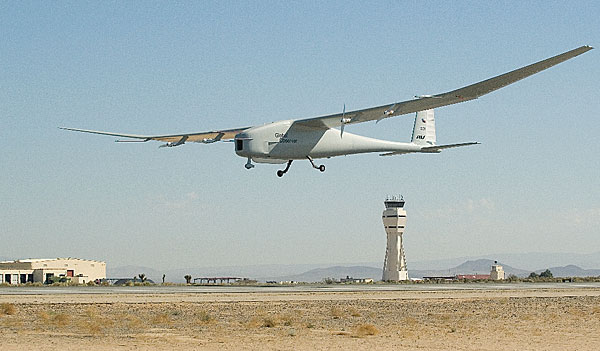The AeroVironment (AV) Global Observer unmanned air vehicle has flown successfully at Edwards Air Force Base in California. This is a high-altitude, long-endurance unmanned aircraft system that is touted by AV “to combine the best attributes of satellites and both manned and unmanned aircraft.”
Its revolutionary liquid hydrogen-fueled
propulsive system, an LH2 internal combustion powerplant driving four high-efficiency electric motors with propellers, will allow the AV Global Observer to operate in the stratosphere over 12 miles (63,360 feet) high for five to seven days at a time, while loitering over areas of observation some 600 miles (965.6 kilometers) in diameter.
It is a large air vehicle with a length of 70 feet (21.3 meters), a wingspan of 175 feet (53.3m), and it can carry payloads of up to 400 pounds (kilograms). According to AV, it features a very light, durable airframe, and it will operate from conventional 150 feet (45.7m) wide by 6,000 feet (1,828.8m) long paved runways with 4,200-foot (1,280.1m) takeoff and landing distances.
This milestone marks the beginning of high-altitude, long-endurance flight testing for the demonstration and operational utility phase of this Joint Capability Technology Demonstration program. Two Global Observer aircraft, each flying for up to a week at a time, could alternate coverage over any area on the earth, providing a seamless, persistent platform for high-value missions such as communications relay, remote sensing, long-term surveillance and border patrol, officials said.—Steve Pace
















